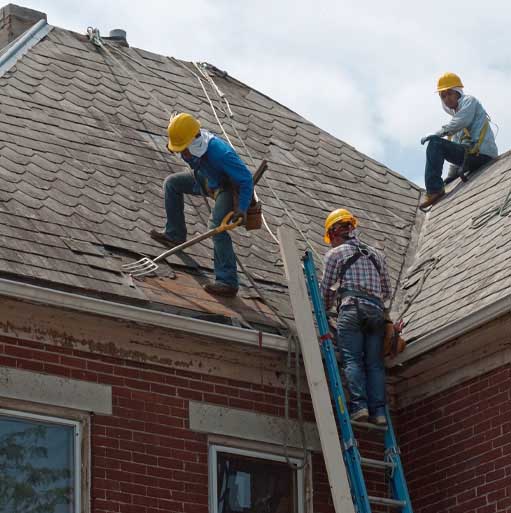A roof installation is a relatively expensive investment that requires careful planning. You need to know how much your new roof will cost and what you can do to minimize the cost. You should also understand why some roofs are expensive and others are affordable. Below are the major factors that determine roof installation costs.
Materials
Materials form a significant part of the roofing costs. Some of the materials you may need include:
- Decking
- Insulation
- Underlayment
- Shingles
- Ridge caps
- Gutters
The type and quality of the materials determine their cost. For example, 3-tab shingles cost an average of $70 to $100 per square, while architectural shingles range between $100 and $160 per square.
Size
The size of the roof determines the quantity of the roofing materials and the labor hours. Note that the size of the house is proportional to the size of the roof, but the two are not equal. The size of the roof is the surface area of the actual places that need roofing materials.
The roof’s design determines the roof size. For example, a complicated roof design with many corners is likely to have a higher surface area than a relatively simple roof design.
Local Labor Fees
Labor costs vary a lot and frequently change. The demand for roofing services is a major factor in the determination of labor costs. For example, labor costs may go up during the summer when many people need roofing services. Other factors that affect labor charges include the economy and the complexity of the roof’s design.
Slope
The roof’s slope is significant for two main reasons: first, the slope determines the ease of working on the roof — low-slopped roofs are easy and safe to operate on, so they attract relatively low charges. Second, the slope determines the equipment the contractor needs to work on the roof. For example, a steep roof requires more harnesses and railings than a flat roof.
Existing Surface
To replace an existing roof, you either install the new roof over the existing one or remove the old roof first. The first option is not always possible or advisable — overlaying the new roof over the old one can overload the house.
For the second option, the cost to remove the existing material is in addition to the installation costs. The same things that determine installation costs, such as material, size, and pitch, also determine the tear-off cost.
Special Features
Roofs with extra features also cost more to install. Examples of these types of features include skylights and chimneys. Note that such special features also need materials separate from the main roofing materials.
Permits
You need a roofing permit to install or replace a roof, and residential and commercial buildings attract different charges for permits. If you don’t pay for the permit in time, you will have to pay the penalty plus the original permit cost. Luckily, most professional roofing contractors will apply for the permit on your behalf.
Design
Lastly, the roof’s design also affects the overall roofing cost. The design will affect:
- The quantity of the materials
- The labor hours
- The slope of the roof
For example, a hip and valley roof (with multiple peaks and valleys) is likely to cost more than a gable roof (two roof sections sloping in opposite directions). For one, a hip and valley roof will require more ridge caps than the simple gable roof.
The above factors just give you a rough overview of what to expect with your roof’s installation. Seagate Roofing and Foundation Services can assess your roof and give you an accurate figure.
Contact us for an estimate now. We will be glad to work with you on your roofing project.

